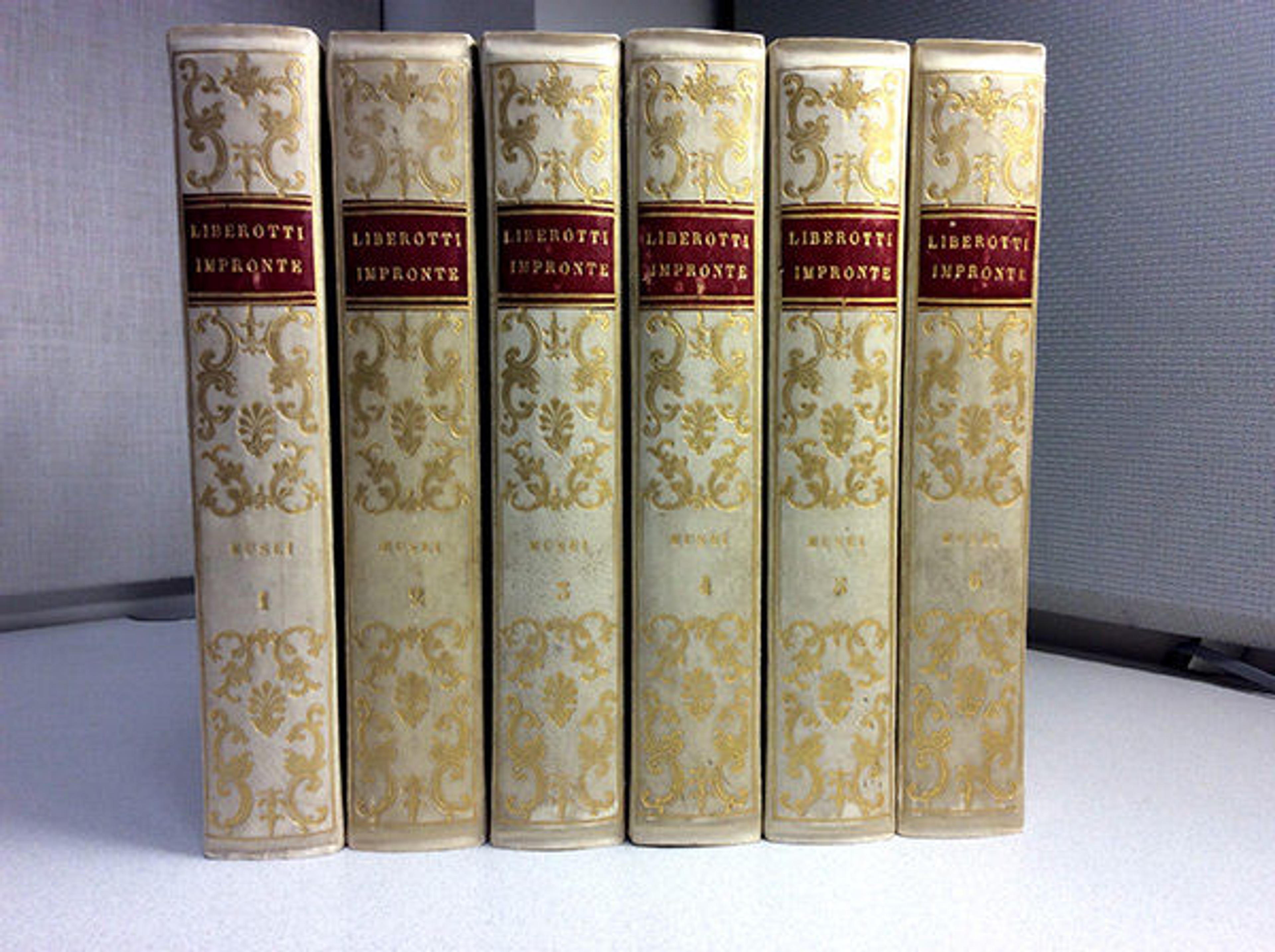
Liberotti, Giovanni. Liberotti Impronte, vol. 1–6. Rome: Giovanni Liberotti, [between 1820 and 1830?].
«We have become so accustomed to documenting our trips by taking photos with our phones that it is hard to imagine a time when there were no smartphones, let alone cameras, but travel for pleasure and edification existed long before there were any cameras. From the sixteenth through the nineteenth century, many people widened their cultural horizons by going on what was known as a Grand Tour, where travelers would visit all the major European cities such as Rome, Florence, Venice, and Paris. Instead of photographs, they came away with visual aide-mémoires, like these volumes, that helped to remind them of the glorious art work that they had seen abroad.»
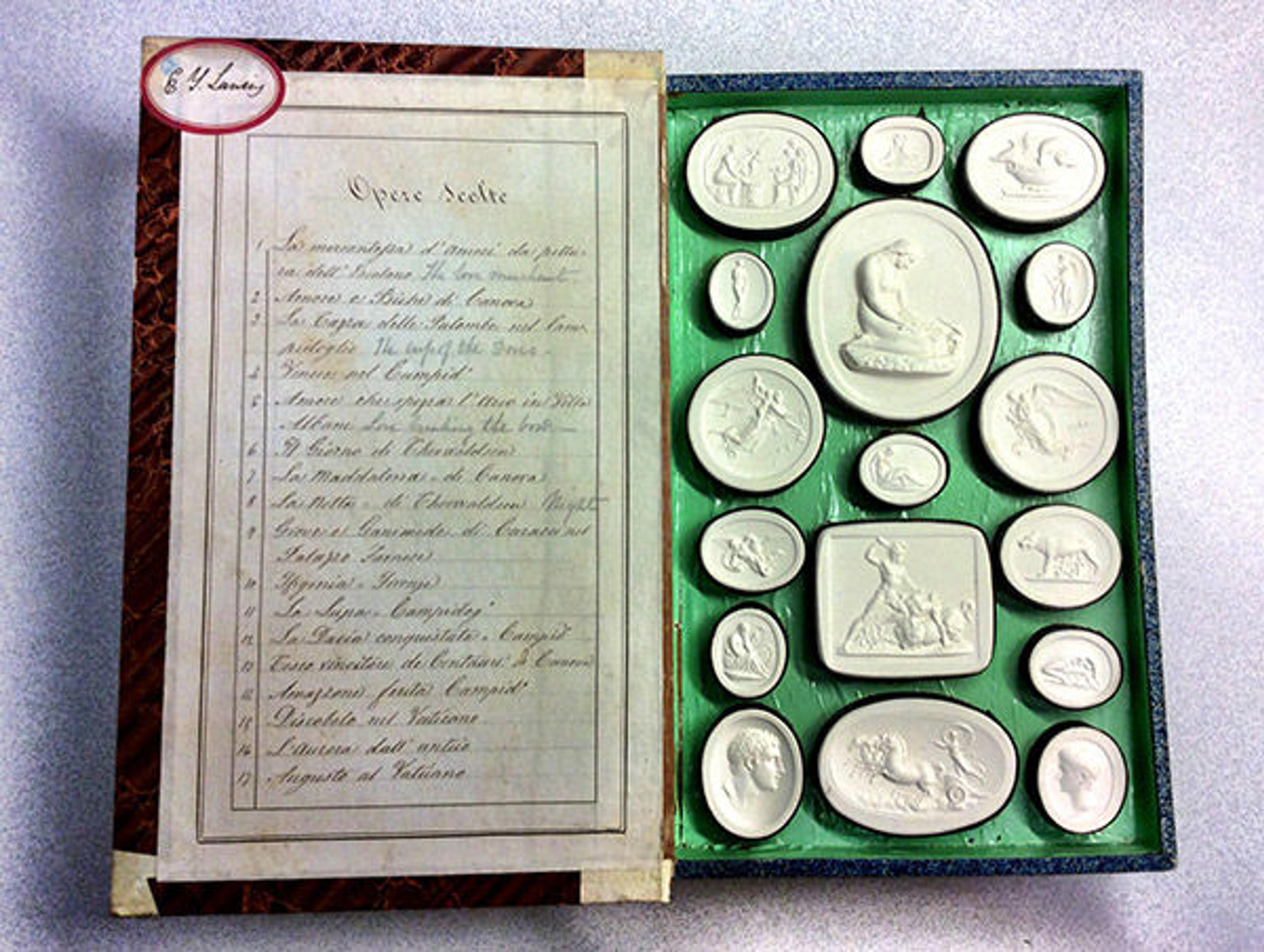
Liberotti, Giovanni. Liberotti Impronte, vol. 1. Rome: Giovanni Liberotti, [between 1820 and 1830?].
This six-volume faux-book set of plaster-cast (white gesso) impressions of European masterpieces, Liberotti Impronte, was created by Giovanni Liberotti, a nineteenth-century Roman gem engraver who specialized in making these souvenirs. Liberotti had been initially commissioned to make these impressions based on gems in the collection of Giovanni Battista Sommariva (1760–1826), a noted art patron and collector extraordinaire. Later Liberotti and other competitors would market the boxed sets in Rome to eager tourists. Each box has the impressions glued to an interior board on one side and a handwritten list in Italian of the "Selected Works," which lists each piece's name, artist, and, on occasion, location on the other side. Our copy sometimes has the artwork name scrawled in English in pencil next to the Italian. (The Met has another contemporary set done by a different engraver, Francesco Carnesecchi.) In addition, some sets have handwritten lists of the cast reproductions bound as pamphlets and tipped into the boxes. We have such a list from another box set, which can be found under the title Collezione d'impronte che si fanno in Roma da Giovanni Liberotti in our online catalog.
At first, I was surprised to note that these miniature reproductions were not just copies of ancient cameos and gems, as I had expected, but many were miniature reproductions of huge paintings, including The Last Supper by Leonardo da Vinci (La Cena di Gesu con gli apostoli di Leonardo da Vinci Milano), and monumental sculpture, such as works by Antonio Canova and Bertel Thorvaldsen.
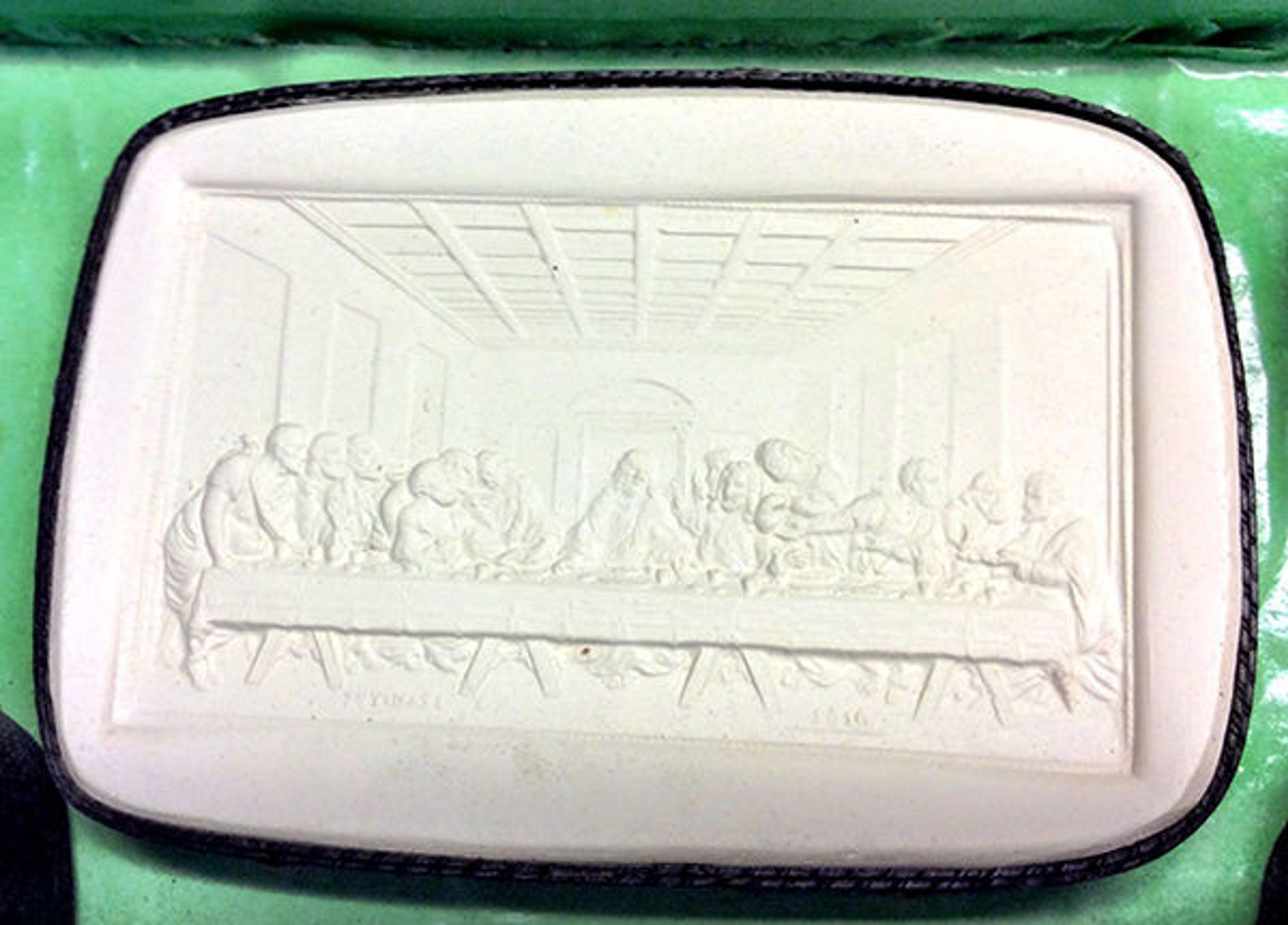
La Cena di Gesu con gli apostoli di Leonardo da Vinci Milano, cast from volume four
Nothing is more impressive than the original engraver's ability here to capture the very essence and detail of the larger masterpieces in such miniature intaglios. It is not surprising that Goethe himself "owned many thousands of casts [and] told his correspondents years later that no greater treasure could be brought back from Rome."1
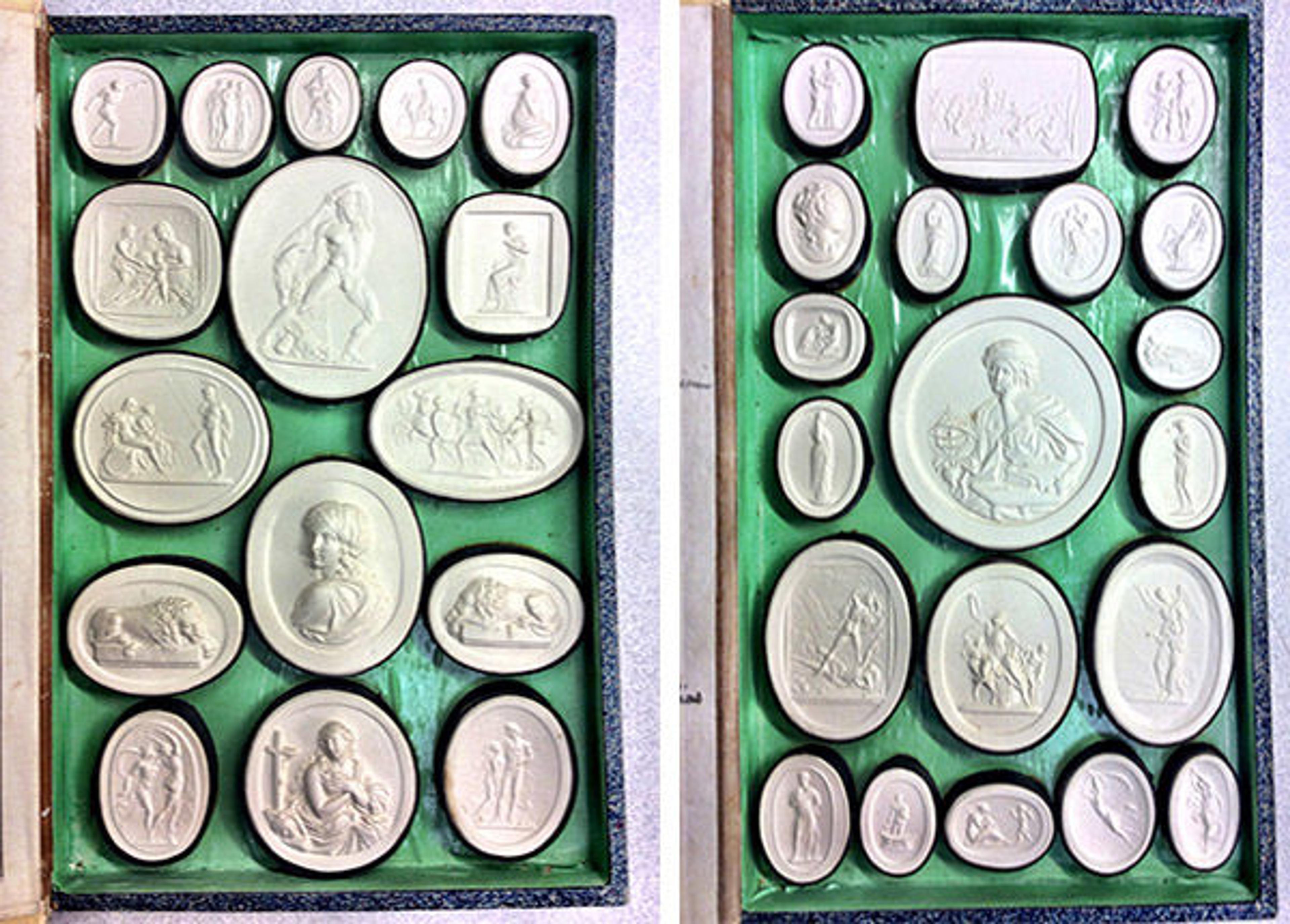
Interiors of volumes two and three
One of my favorite pieces is in volume three, according to the handwritten list, is an image of the Phrygian sibyl created by the Italian artist Guercino (La sibilla frigia di Guercino). It depicts the sibyl leaning her left elbow on a book draped with a sheet of paper with face in hand, holding in her right hand an armillary globe, looking downward, deep in melancholic thought. An inkwell and compass sit on the wooden table before her.

La sibilla frigia di Guercino, cast from volume three
Right beneath the sibyl is another one of my favorites, The Laocoon (Laocoonte Vaticano)—truly amazing when you consider that the original statue in the Vatican is almost seven feet tall, while the cast is only five centimeters tall and could easily fit in the palm of your hand. The original Laocoon has long been an obsession with tourists and artists alike, leading to fun caricatures of it like the woodcut of it by Boldrini here at the Met.
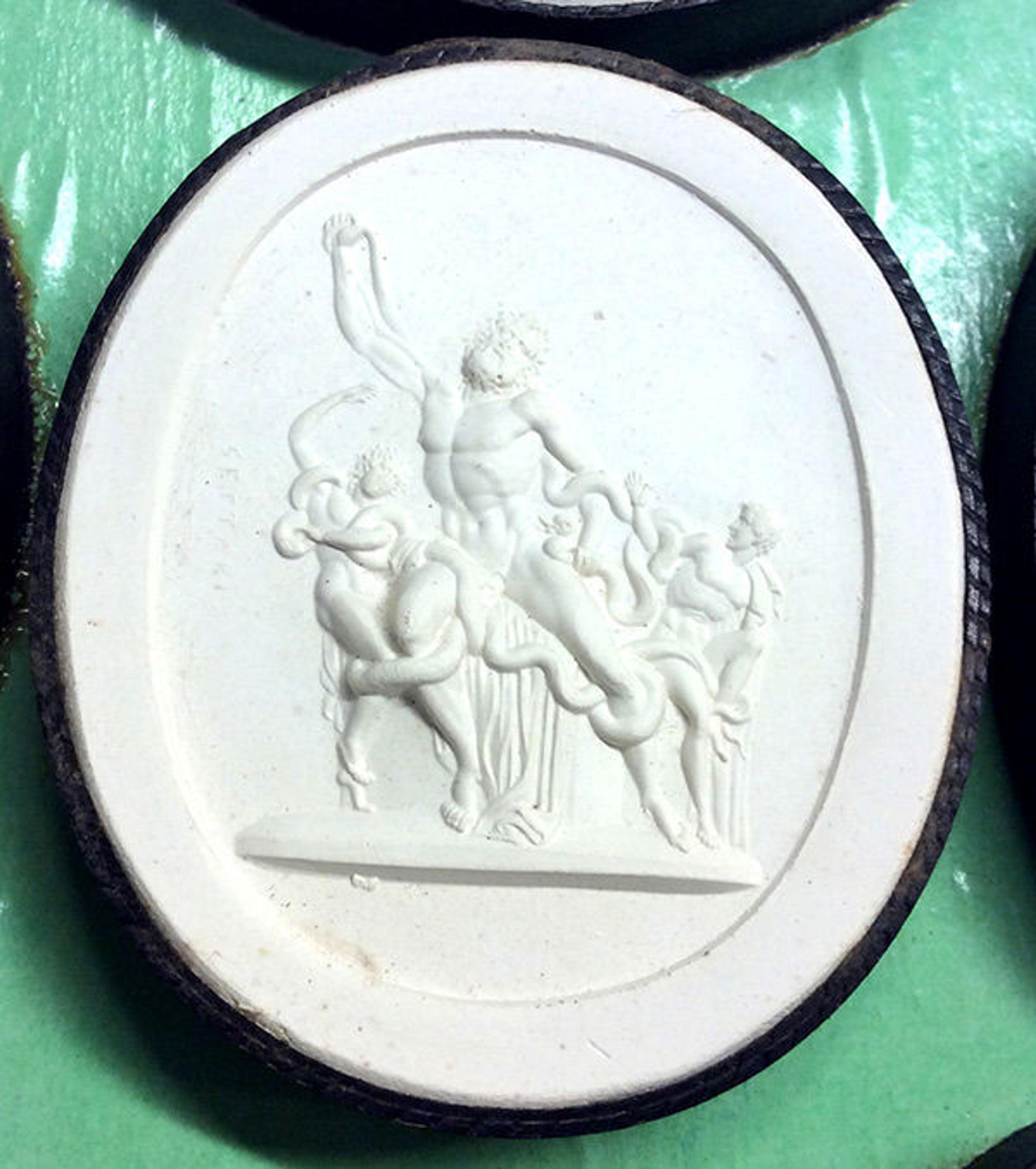
Laocoonte Vaticano, cast from volume three
When you come by to check out the Liberotti Impronte, don't forget your magnifying glass! (Though we do have an extra one at the Reference Desk in case you do.)
[1] Gertrud Seidmann, "The Grand Tourist's favourite souvenirs: cameos and intaglios," RSA Journal, vol. 144, no. 5475 (December 1996), p. 65.